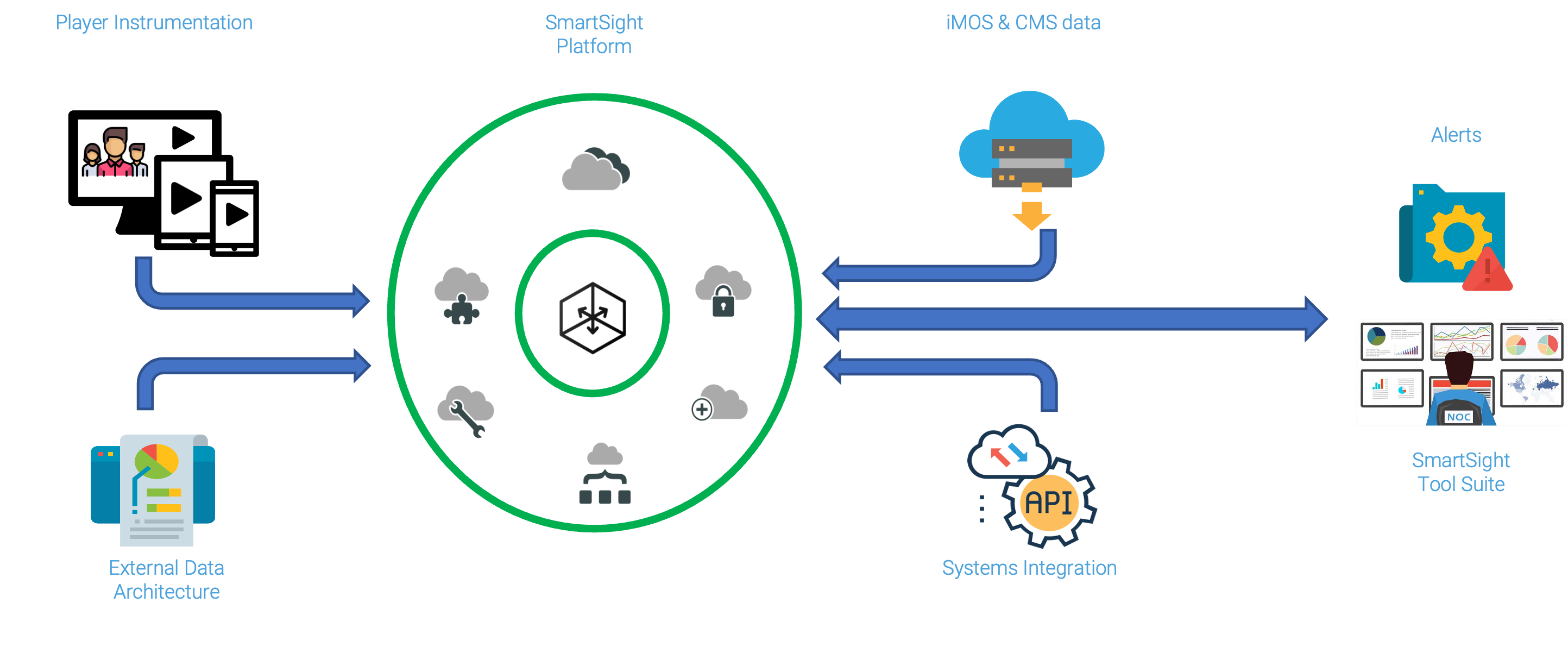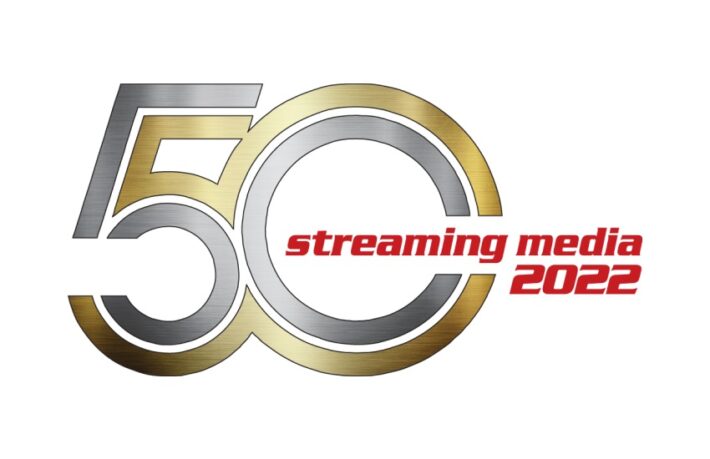Streaming Intelligence: The SmartSight Platform: Part 1

“Without knowledge action is useless, and knowledge without action is futile.” – Abu Bakr
It will hardly be controversial in our industry to state that delivering a successful streaming video service involves facing some tough challenges. It’s a war out there! How does a service operator ensure that they can meet evolving challenges with a focused set of tools that can help address key business challenges? In Part 1 of this series, we introduce the role of the platform.
A fuller version of the complete three part Streaming Intelligence blog series is available in download form.
The Field of Battle
Some key battleground issues on the front lines of the streaming business include:
- Rising consumer expectations — cinema like quality on all devices under all conditions, with zero buffering, and offered at a low cost.
- Continuing business pressure — monetization models for growing content libraries, consumer retention and satisfaction, bandwidth hungry UHD content adding to delivery costs, and an increasing intensive competitive environment.
- Complex technical challenges — Millions of different player, device, and network combinations to optimize, with limited control over the CDN/last mile, and a largely unmanaged in-home network environment.
It’s essential to have a good selection of tools at hand to help navigate these operational and business challenges, and vendors have crowded into the video analytics space to try and address the requirements. But, all too frequently, the offerings are seen to fall short:
- Data acquisition doesn’t always include comprehensive, precise data from the point of consumption itself.
- QoE estimation relies on bandwidth use alone as a proxy for an objective standard of video quality goals.
- Data volume and UI features alone fail to deliver the necessary clear insights to support timely optimization.
- A historical analytics approach leads to a rear-view-mirror operational perspective.
- With a growing mix of business approaches, tools can be inflexible in fully matching new operator use cases.
Overall, the industry landscape could be viewed as largely comprised of undifferentiated, also-ran offerings that enable checking the box of analytics deployment, but without fully empowering or enriching the operator’s business decision making.
Just like any war zone, intelligence is a vital resource for both tactics and overall strategy. In this conflict we definitely have an urgent need for streaming intelligence – using the best of today’s technologies and techniques to join the dots between a lake of data and a business improvement process.
And technology has marched on considerably since the earliest vendors brought their products to market. The cloud has contributed, for example, a relaxation of constraints on storage and compute resources, as well an especially rich set of options in advanced technologies like artificial intelligence (AI) and machine learning (ML). Many pre-built, value-adding services are now available to integrate with streaming intelligence platform and help underpin an operator’s success.
Basic video analytics technologies have supported us in the journey to the current state of the streaming industry and ensured successful operational level deployments. But, to take us to the next stage of development, it’s generally acknowledged that we need to go further. Streaming analytics platforms now need also to address higher level business problems, including such things as addressing OTT churn models and ad revenue. For these challenges we need to consider streaming intelligence.
What is Streaming Intelligence?
The capability to offer effective streaming intelligence fundamentally rests on three pillars:
- Objective measurement (including objective video quality)
- Platform integration
- Best-in-class tool availability
Let’s look carefully at each of these supporting concepts.
It all Starts with Data
In order to provide intelligent insights, data must be sourced in a way that ensures accurate, comprehensive, and objective visibility to video consumption events as seen by the viewer. This can only be accomplished through a close integration with video player logic – and this integration must be available across all platforms important to the service operator.
Additional data is sourced from CMS, CDN, business management, ad-insertion, and iMOS video quality tools to give a richer contextual delivery picture. MediaMelon’s iMOS tools, in particular, provide a unique and objective view of video delivery. The technology underpinning iMOS was developed in line with the ITU EVP protocol and scored quality reports for each viewer session are calibrated to reflect feedback as though an expert viewing panel was sitting in the consumer’s living room.
The availability of such sophisticated benchmarks vaults the acquisition approach beyond the mere measurement of video bitrate, latency, etc. and takes us closer to a per session, per device type understanding of how to balance cost and quality in a way that is significant to the consumer.
The Importance of a Platform
A platform-centric approach differentiates a modern architecture from offerings that simply enable tool by tool siloed report generation. The platform provides an integrated, scalable and flexible resource to power all types of human and machine learning tools that contribute to business insight. A rich and rapidly evolving cloud provider environment and a fundamental choice of cloud-native implementation enables a product focus on developing streaming intelligence value rather than undifferentiated data management and user management services.
The core value proposition around the streamlining intelligence platform is based on:
- Data accuracy and integrity
- Resource and feature scalability
- Agility/Openness
In the data platform itself, information security and access management is fundamentally important. Security from the standpoint of data loss prevention and integrity, but also to adequately answer questions about privacy and breach risk. Access control from the standpoint of granting carefully graduated account management rights across data from different sources/roles and for different use cases. Unified platform approach gives tool operational consistency and serves to enable user account maintenance through 3rd party directory services or SSO mechanisms to satisfy enterprise level integration. Comprehensive account management additionally supports transparent usage-based and storage-based billing models.
Additionally, no cloud solution is complete without a fundamental layer of API services that underpin both control and data access mechanisms. A rich API layer not only supports native solution tools, but integration with 3rd-party resources, tools, and services. Cloud implementation enables leverage of state-of-the-art API authentication, metering and exception management services from the provider environment.
{{cta(‘48274e25-37e3-427b-812b-60c52d1331c7’)}}
Conclusion
Streaming video data collection and analytics is a core part of OTT services today. Even the most basic tools help OTT businesses diagnose and address systemic delivery issues that impact consumer QoE. But relying on basic historical metrics like total views, average watch time, and others can only provide you with limited insight to service performance and any potential for a competitive advantage. The opportunity here is much greater—to leverage streaming intelligence to build better, scalable business around streaming content.
At MediaMelon, we focus on building powerful streaming intelligence tools that don’t just offer data, but help you gain better visibility into your content engagement and business leverage. We leverage a best-in-class ML-enriched data platform to derive actionable insights for streaming solutions. From offering real-time data to providing content and subscriber insights, we take care of streaming intelligence end-to-end.
To learn more about MediaMelon, you can reach out to us here.



